Bringing a new dog into your life is an exciting journey, but it also comes with responsibilities that require careful consideration. Beyond selecting a breed known for its temperament or genetic health, an often-overlooked factor that significantly impacts your daily life is shedding. For many prospective pet parents, the idea of a home covered in dog hair is a major deterrent, leading them to seek out medium sized dogs who don’t shed. This concern is amplified for individuals or families dealing with pet allergies, where excessive dander (skin flakes often carried on shed hair) can trigger uncomfortable reactions.
It’s crucial to understand a common misconception: no dog is truly “non-shedding.” All dogs, like humans, lose some hair. The more accurate term is “low-shedding.” These breeds typically have hair that grows continuously and doesn’t fall out as readily as other breeds, or they have a coat type that traps loose hairs before they can spread throughout your home. However, this also means that even these low-shedding breeds require dedicated grooming to remove trapped dead hair, prevent matting, and maintain a healthy coat and skin. Neglecting this can lead to painful tangles, skin issues, and even more shedding than anticipated. This guide will help you navigate the world of low-shedding, medium-sized dog breeds, detailing their unique coat care requirements so you can make an informed decision and enjoy a cleaner home with your new companion.
Understanding “Low-Shedding”: More Than Just Less Hair
When we talk about medium sized dogs who don’t shed extensively, we’re primarily referring to breeds with specific coat characteristics. Unlike high-shedding dogs that have a seasonal “blow” where they lose their undercoat, low-shedding breeds often have a single coat or a double coat where the shed hair is retained within the existing coat. This retention is a blessing for your furniture but means you need to step in and manually remove that hair through regular brushing.
Different coat types demand different grooming routines. For instance, dogs with wiry coats might need hand-stripping, while those with long, silky hair will require daily brushing to prevent tangles. Even a short-coated, low-shedding dog will benefit from weekly brushing to stimulate natural oils and remove any loose fur. Understanding these distinctions is key to managing your dog’s coat and ensuring they remain comfortable and healthy. It’s a trade-off: less shedding in your home often means more dedication to grooming. For an exploration of other sizes and breeds, consider learning about very large dog breeds pictures and names to broaden your understanding of canine diversity.
Our Top 10 Medium Sized Dogs Who Don’t Shed (Much)
Here’s a detailed look at some of the best medium-sized breeds known for their low-shedding qualities, along with their specific grooming needs.
Basenji
The Basenji, often called the “barkless dog,” is known for its distinctive yodel and cat-like grooming habits. They are meticulously clean dogs with a short, fine coat that contributes to their reputation as a low-shedder. While they do shed, their hair is so fine and short that it’s barely noticeable compared to breeds with denser coats.
Grooming Needs: Basenjis require minimal grooming. A weekly brush with a rubber mitt or a soft bristle brush is usually sufficient to remove any dead hair and keep their coat shiny. They rarely need baths, as they are very adept at self-grooming.
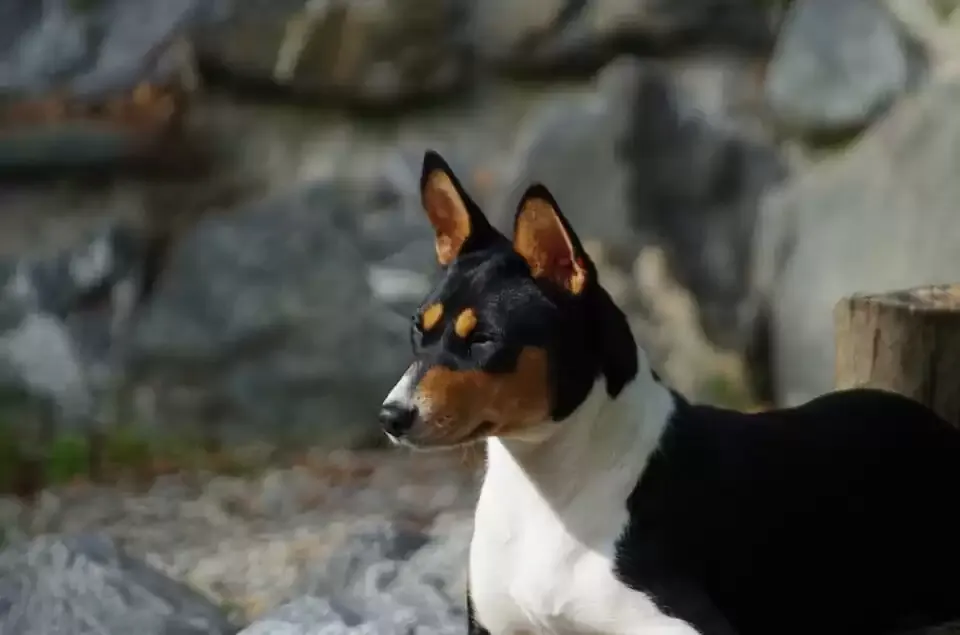 A sleek Basenji dog, known for its minimal shedding coat, sits alertly.
A sleek Basenji dog, known for its minimal shedding coat, sits alertly.
Kerry Blue Terrier
This charming and energetic terrier boasts a soft, dense, wavy, and distinctive blue-grey coat that sets it apart. The Kerry Blue Terrier is an excellent choice for those seeking medium sized dogs who don’t shed heavily, as their hair grows continuously rather than shedding seasonally. This breed is known for its playful and loving nature, making it a wonderful family pet.
Grooming Needs: Despite being a low-shedder, the Kerry Blue Terrier’s coat demands significant attention. Daily brushing is essential to prevent matting and tangles. Professional grooming for clipping and shaping is typically required every four to six weeks to maintain their characteristic appearance and keep their coat manageable.
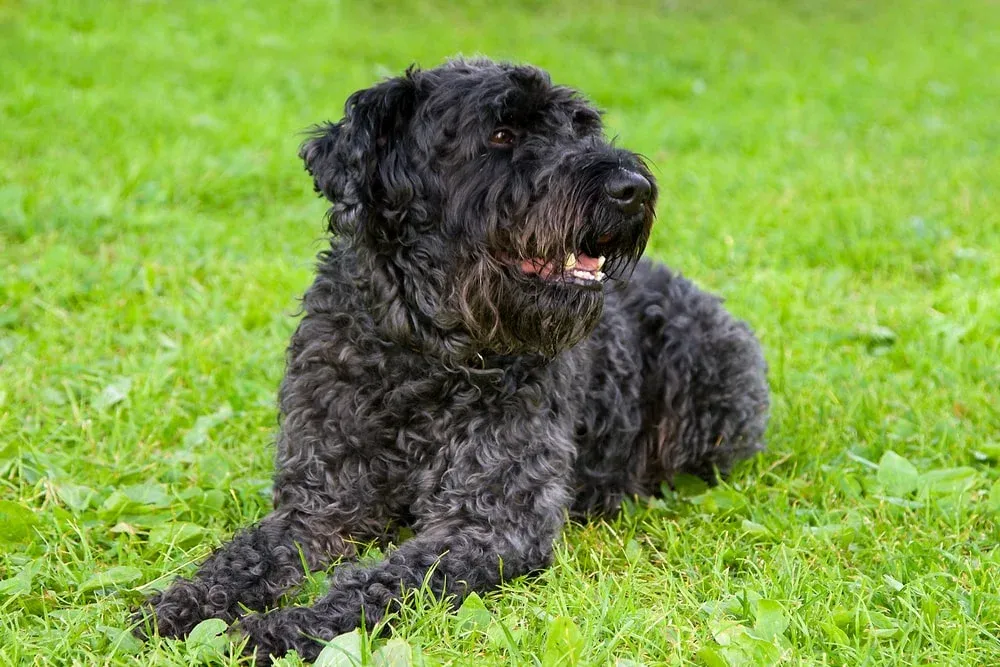 A beautiful Kerry Blue Terrier with its distinctive blue-grey, low-shedding coat.
A beautiful Kerry Blue Terrier with its distinctive blue-grey, low-shedding coat.
Labradoodle
A popular crossbreed originally developed as a hypoallergenic guide dog, the Labradoodle comes in various coat types, with fleece and wool coats being the lowest shedding. Their friendly disposition and intelligence make them a favored choice among families and individuals looking for medium dogs for allergies.
Grooming Needs: Labradoodles have three main coat types: Hair Coat (sheds most), Fleece Coat, and Wool Coat (sheds least). Regardless of the type, all Labradoodle coats require regular care. Weekly brushing is a must to prevent matting, especially for the fleece and wool coats, which are prone to tangles. Many owners also opt for professional grooming every 6-8 weeks to keep the coat trimmed and tidy.
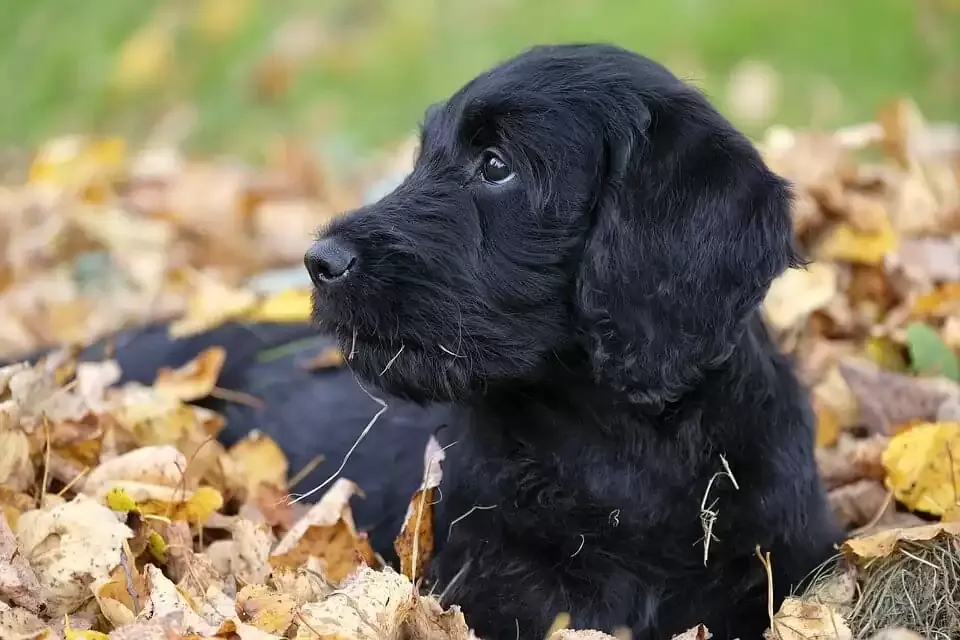 A fluffy Labradoodle, a popular medium-sized dog known for its various low-shedding coat types.
A fluffy Labradoodle, a popular medium-sized dog known for its various low-shedding coat types.
Irish Terrier
The “daredevil” of the terrier family, the Irish Terrier possesses a wiry, dense double coat that is surprisingly low-shedding. Its vibrant red color and courageous spirit make it a striking companion. The outer coat is harsh, while the undercoat is softer, trapping shed hair.
Grooming Needs: To keep their distinctive wiry texture and minimize shedding, Irish Terriers require weekly brushing to remove dead hair from the undercoat. Additionally, professional hand-stripping or plucking every six months is essential. Clipping their coat will make it softer, change its texture, and can actually lead to more shedding.
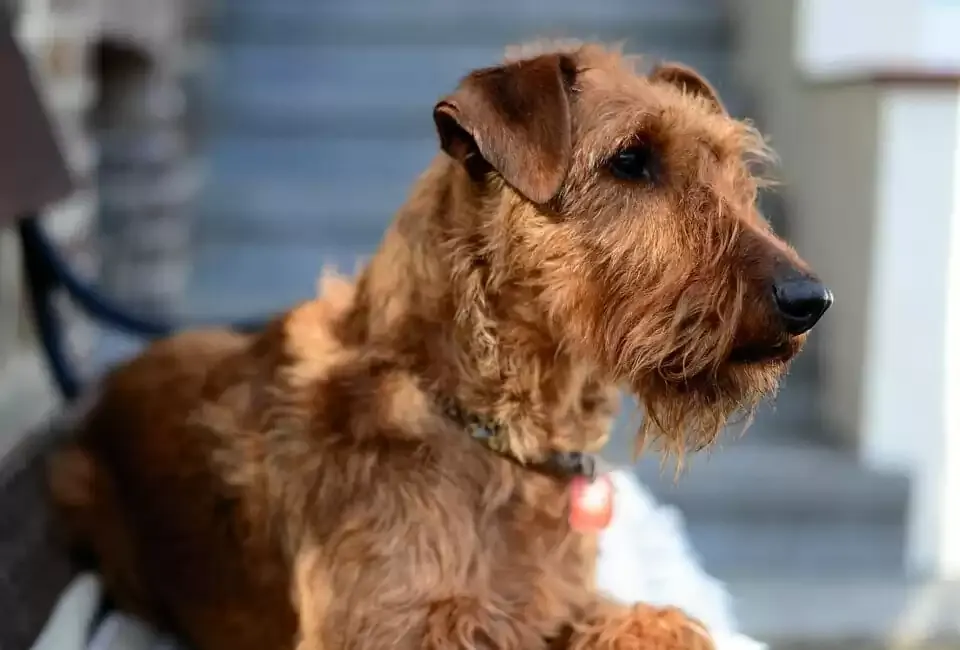 An alert Irish Terrier displaying its distinctive wiry, low-shedding double coat.
An alert Irish Terrier displaying its distinctive wiry, low-shedding double coat.
Puli
The Puli is instantly recognizable by its unique corded coat, a defining feature of this Hungarian herding dog. These cords form naturally from their dense double coat, creating a striking and protective covering. Pulis are intelligent, agile, and fiercely loyal.
Grooming Needs: Puli puppies have a fluffy coat that requires regular brushing to prevent matting. As the adult coat develops (around 9-18 months), the cords begin to form. Owners often need to manually separate these cords to help them form properly and prevent them from matting into large clumps. Once fully corded, the coat does not require brushing but needs regular separation and cleaning. This specialized grooming is crucial, and new owners should seek advice from experienced Puli breeders or professional groomers.
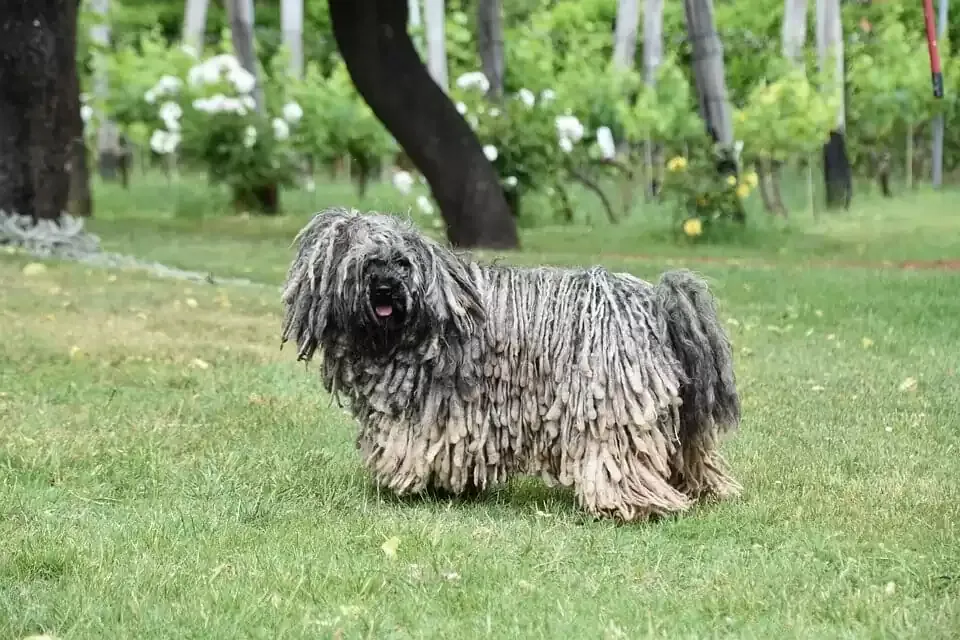 A unique Puli dog showcasing its characteristic corded coat, a trait of this low-shedding breed.
A unique Puli dog showcasing its characteristic corded coat, a trait of this low-shedding breed.
Standard Schnauzer
The robust and intelligent Standard Schnauzer is a fantastic option among medium sized dogs who don’t shed excessively. Their distinctive wiry outer coat and soft undercoat work together to trap loose hairs, preventing them from falling out. Known for their protective yet playful nature, they make excellent companions.
Grooming Needs: This breed requires a consistent grooming routine to maintain their handsome appearance and prevent painful mats. Daily grooming of their beard and leg furnishings is necessary. The main body coat benefits from hand-stripping every six months to remove dead hair and promote new growth of the wiry texture. If you choose to clip a Schnauzer’s coat instead of stripping, you may notice more shedding, and the coat texture will soften.
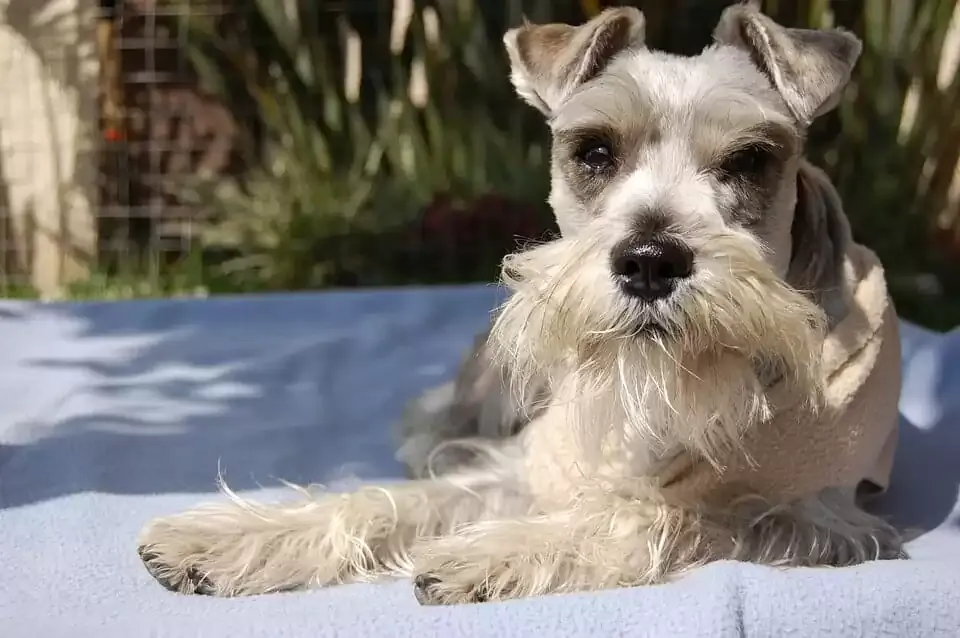 A handsome Standard Schnauzer with its signature wiry coat, a popular medium sized dog who doesn't shed excessively.
A handsome Standard Schnauzer with its signature wiry coat, a popular medium sized dog who doesn't shed excessively.
Tibetan Terrier
Despite its name, the Tibetan Terrier is not a true terrier but a sturdy companion dog from Tibet, revered for its loyalty and intelligence. They possess a long, beautiful double coat that can be wavy or straight and is considered low-shedding, making them a suitable option for those seeking a medium-sized dog for allergies.
Grooming Needs: The Tibetan Terrier’s luxurious coat requires significant daily commitment. Daily brushing is essential to prevent tangles and mats from forming, particularly in the dense undercoat. Neglecting this can quickly lead to painful matting. Many Tibetan Terrier owners find it beneficial to enlist the expertise of a professional groomer to help manage their dog’s coat regularly. Without dedicated grooming time, this breed might not be the best fit.
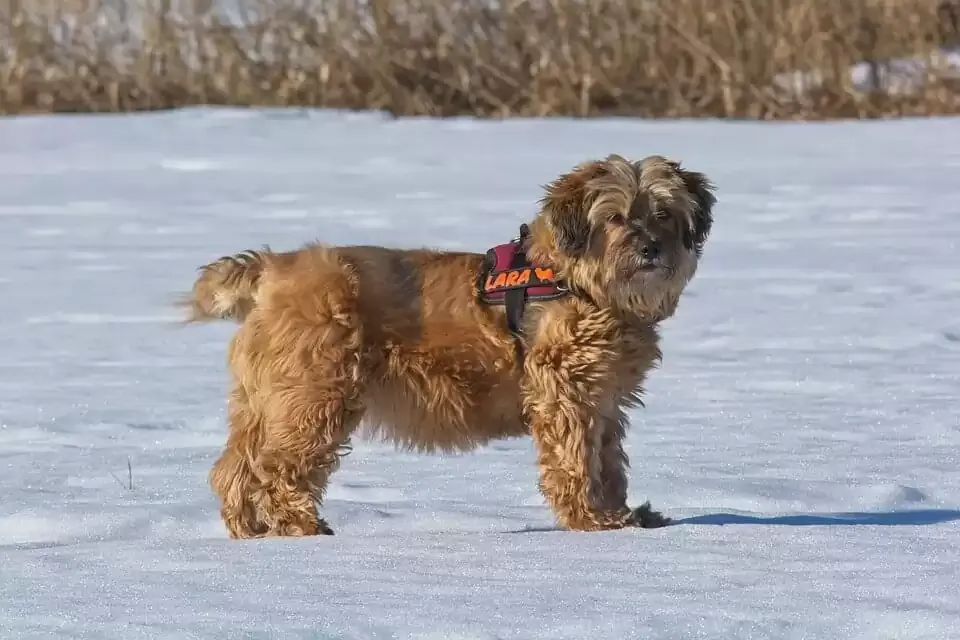 A long-haired Tibetan Terrier, a medium-sized dog with a luxurious low-shedding double coat.
A long-haired Tibetan Terrier, a medium-sized dog with a luxurious low-shedding double coat.
Welsh Terrier
The Welsh Terrier is a lively and charming breed with a distinctive wiry coat, similar to its Irish cousin. They are playful, intelligent, and relatively low-shedding, making them a great addition to active families. Like many terriers, their coat traps loose hairs.
Grooming Needs: To keep the Welsh Terrier’s coat in prime condition and maintain its low-shedding qualities, regular grooming is vital. Brushing three or more times per week is recommended. Many owners opt for professional hand-stripping every six months to remove dead hair and preserve the coat’s wiry texture. Clipping, while easier, will result in a softer coat and potentially slightly more shedding.
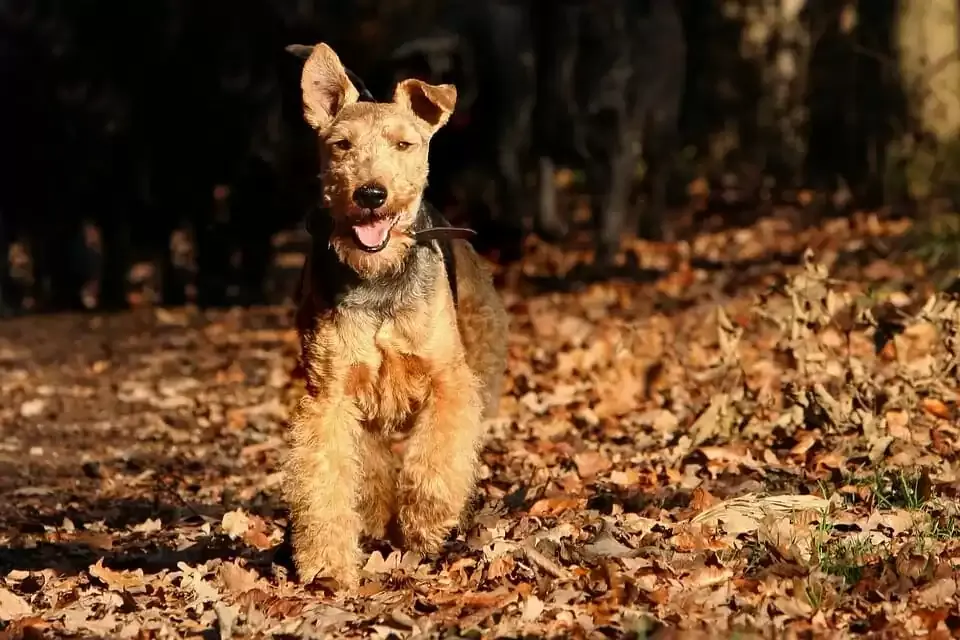 A lively Welsh Terrier, showcasing its typical wiry coat that contributes to its low-shedding nature.
A lively Welsh Terrier, showcasing its typical wiry coat that contributes to its low-shedding nature.
Soft-Coated Wheaten Terrier
With its stunning, soft, and silky single coat, the Soft-Coated Wheaten Terrier is a beloved medium-sized breed known for its exuberant personality and low-shedding nature. Their beautiful wheat-colored coat is a hallmark of the breed.
Grooming Needs: Despite having a single coat, Wheatens require daily grooming to prevent tangles and mats from forming in their fine, flowing hair. Some owners prefer a slightly scruffier look, which might allow for brushing three times a week, but daily attention is ideal. Regular professional trimming and clipping can also help manage their coat and keep it looking neat.
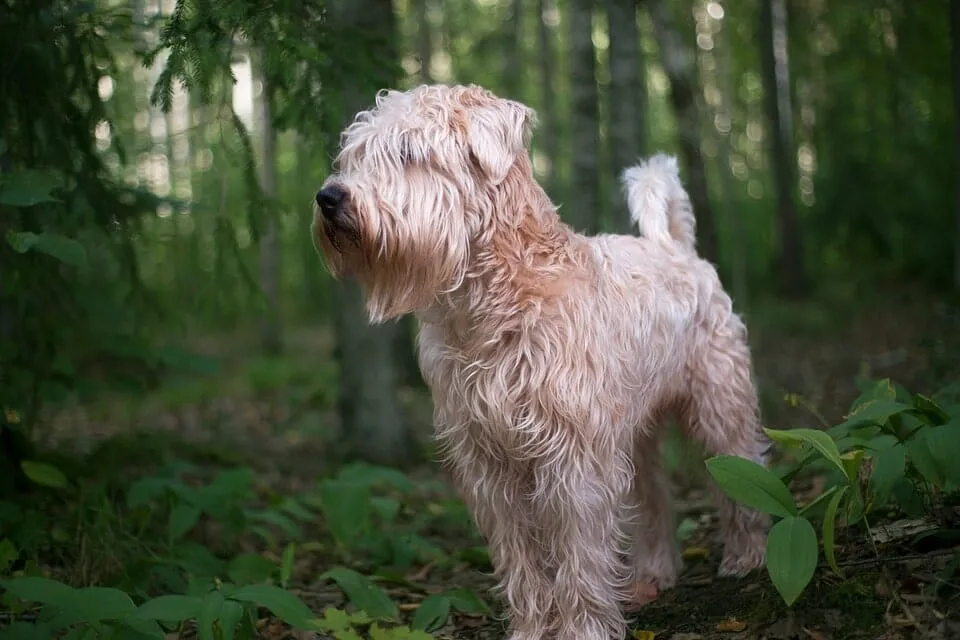 A beautiful Soft-Coated Wheaten Terrier with its flowing, silky, single coat, a popular medium sized dog who doesn't shed much.
A beautiful Soft-Coated Wheaten Terrier with its flowing, silky, single coat, a popular medium sized dog who doesn't shed much.
Whippet
The Whippet, a graceful and athletic sighthound, is a popular choice for those seeking medium sized dogs who don’t shed much and require minimal grooming. Their sleek, short, and thin coat is easy to maintain, making them a “wash-and-wear” breed. They are calm indoors but love to run outdoors.
Grooming Needs: Whippets are incredibly low-maintenance when it comes to grooming. A weekly brush with a soft brush or grooming mitt is usually sufficient to remove any loose hairs and keep their coat in excellent condition. Due to their very short and thin coat, care should be taken to protect their skin from minor injuries or tears during play.
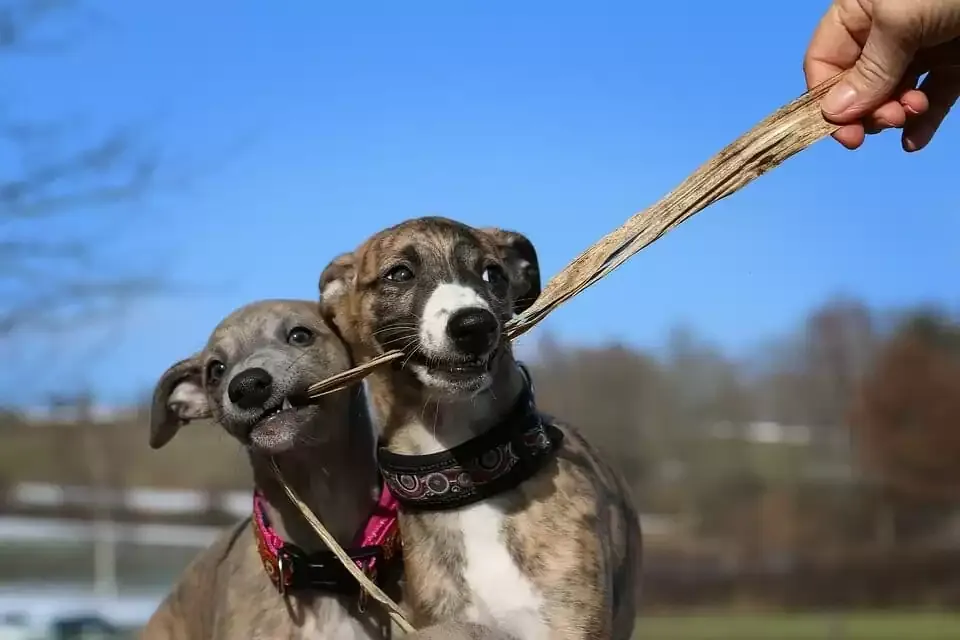 A graceful Whippet, an active medium-sized dog with a short, low-maintenance coat.
A graceful Whippet, an active medium-sized dog with a short, low-maintenance coat.
Are “Hypoallergenic” Dogs Truly Allergy-Free?
When discussing medium sized dogs who don’t shed, the term “hypoallergenic” often comes up. It’s important to clarify what this truly means. No dog is 100% hypoallergenic. The term simply indicates that these breeds are less likely to cause an allergic reaction. This is because most people are allergic to dander (dead skin cells), saliva, or urine, rather than the hair itself. Low-shedding dogs tend to release less dander into the environment, as their loose hair and skin are often trapped within their coat.
Before committing to any breed, especially if allergies are a concern, it’s highly recommended to consult with your doctor to identify your specific allergy triggers. Once you have a clearer picture, spend as much time as possible interacting with your chosen breed and a reputable breeder. Observe your reactions closely to determine if your allergies can tolerate consistent contact. This direct experience is the most reliable way to assess compatibility.
Conclusion
Choosing a canine companion, especially among medium sized dogs who don’t shed much, involves balancing your lifestyle with a dog’s specific needs. While the dream of a completely hair-free home with a “non-shedding” dog is a myth, many low-shedding breeds offer a wonderful alternative for those seeking reduced allergens and less vacuuming. However, it’s vital to remember that “low-shedding” often translates to “high-grooming.” Each breed has unique coat care requirements, from daily brushing to professional stripping, that must be met to ensure their health and comfort.
By understanding these grooming demands and confirming your own allergic sensitivities, you can confidently select a medium-sized, low-shedding dog that seamlessly integrates into your home and lifestyle. We hope this comprehensive guide has illuminated the best options available and equipped you with the knowledge to find your perfect four-legged family member.
